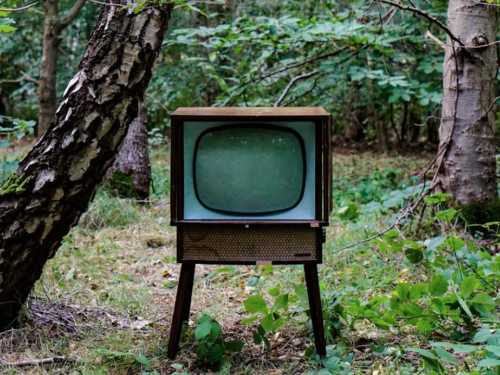
The title of Jean-Luc Godard’s new film, “The Image Book,” is a declaration of the fundamental crisis that it embodies—a crisis that has been in evidence throughout the director’s career. His entire œuvre has been stretched between the literary and the cinematic; he was, in his youth, an aspiring novelist, and now, at the age of eighty-eight, he offers yet another movie in which books do more than figure into the action—they’re the film’s defining trope. Yet “The Image Book” is nonetheless a work of vast visual inventiveness; it’s almost entirely made up of images that are so elaborately and personally crafted that they seem handmade, like cine-paintings. But the images are onscreen so briefly, and edited together so boldly and so surprisingly, as to suggest that the film is meant to be used, perused, and pondered, privately and slowly, bit by bit, like a book. “The Image Book” looks closely at how stories are told in movies, at which stories are told in movies, and at the inseparability of those separate questions, including in Godard’s own work. It’s the work of a filmmaker who’s looking back at his films and the films of his times—and looking ahead to radical changes to come in the cinema and in the world at large.
“The Image Book” is an essay-film—not a drama of acted-out events but a collage, mainly of clips from other films (including many of Godard’s own) and media plus images of paintings, still photographs, intertitles, graphics, and also some documentary footage shot for this film. Godard’s associative montage includes copious voice-overs (much of it in his own voice), music, and sound clips from other movies. It’s created in the manner of, and is a sort of epilogue or sequel to, “Histoire(s) du Cinéma” (1988–99), his long-gestating, core-defining four-hour-plus series of video-essays. But in “The Image Book” (which borrows some shots from that series), Godard’s analysis of the history of cinema, and of his own relationship to it, is centered on one theme: the inadequate depiction of what he calls “the Arab world” and, in particular, the dearth of iconic movie images from the Middle East—which he presents as a failure of the cinema itself, as well as of the world at large.
For Godard, making movies depends on watching and knowing movies. His project is both historical and personal, a kind of wild self-cinematic-psychoanalysis, bringing his realm of references and associations to the fore to reveal what they may—both of the cinema and of himself. In “The Image Book,” Godard shows clips from many Arabic-language films produced in the Middle East and sketches a history of movies from the region along the lines of his own “Histoire(s)”—not a textual, literal, chronological history but a personal history, a critical project. Starting with his selection of individual clips, he transforms them by association with effects, texts, and other images, to turn them not merely historical but historic—by way of their place in his own personal cinematic mythology and iconography.
There’s an element of pride, or, rather, a frank lack of false modesty, in Godard’s procedure. He also includes clips of many of his own movies (including relatively unfamiliar ones, such as “For Ever Mozart,” “King Lear,” and “Vladimir and Rosa”) and shows how they both remake and “rhyme” with the classics that have inspired him. He also refers to his cohorts in the French New Wave to suggest that they share this artistic approach of self-conscious historicism. The revolutionary project embedded within “The Image Book” is the idealistic vision of an Arabic New Wave—the prospect of how its history will transform itself artistically, how it will renew itself like the modern cinema, spearheaded by Godard and his colleagues, was renewed on the basis of its own reprocessings and repurposings. Inasmuch as the French New Wave was a harbinger, even an instigator, of the events of May, 1968, the project of a cinematic renewal in the Arab world is inseparable, in “The Image Book,” from radical practical political change.
“The Image Book,” like Godard’s other essay-films (and, for that matter, like his dramatic features), is richly and dazzlingly allusive. From the start of his career as a feature-film director, with “Breathless,” released in 1960, he sought to condition a new kind of audience for his new kind of movies. At first, he tossed out interviews to the public that were, in effect, decoder rings to unpack and connect the film’s references. Over time, the films themselves became their own decoders—his methods became recognizable and, in recent years, his range of references crystallized to elevate certain images, certain pieces of music, certain lines of dialogue, even colors and effects, into a personal iconographic catalogue.
Just as the very look of “Breathless” made all other new films feel instantly old, so Godard’s manipulations of archival footage, in “The Image Book”—with lurid shifts of color, dramatic heightening of contrast, analytical reframings; drastically lo-fi and analog-created videotape-based effects, and extreme, rhythmic, frame-by-frame slow motion—make everyone else’s use of archival clips seem tame, impersonal, pusillanimous, even parasitical. His transformations liberate the footage from its source and make it radically his own, no mere citation or allusion but an integral element of his creation—and of his artistic identity.
The associations in “The Image Book” allude to ideas of grand philosophical dimensions. Godard considers images of war and cinematic representations of law—and the exactions and depravities committed in its name. He centers the history of cinema in the Second World War and the Cold War, with references to the atomic bomb and the Holocaust. (The provocative associations of images are also sometimes hilarious, as when an image of a warplane from the Flying Tigers squadron is matched with a shot of the shark from “Jaws.”) He considers the Soviet cinema as a counterweight to Hollywood, both through the force of its own images and ideology and through the history of Russian literature that it embodies and extends.
The Arab world has been an express part of Godard’s artistic concerns since he visited the occupied West Bank, in 1969–70, for a film about the struggle for Palestinian independence. A brief clip of that film, ultimately titled “Ici et ailleurs” (“Here and Elsewhere”), is featured in “The Image Book”; now, however, Godard’s view of the struggle ranges even further. In a voice-over, he speaks of the “violence of representation,” and he inscribes the Palestinian struggle in the struggle of images of the Arab world. His attempt to discover what makes images iconic leads him through the philosophical history of cinema, in particular, and of culture at large. “The Image Book” suggests a connection between images of trains and the idea of the deportation of European Jews during the Second World War—and his sequences devoted to Arabic cinema involve the effort to create similarly emblematic images for the modern history of the Arab world, by himself and others. (He also, sordidly, suggests the weaponization of Jewish suffering in the creation of Israel, in a quick sequence featuring a woman wearing a compulsory wartime Star of David, superimposed with an image of hands holding a rifle high above her head, as if she herself were wielding it.)
Nearly half the film is taken up with the fifth of its five numbered sections, “la region centrale” (“the central region,” borrowing the title of a 1971 film by Michael Snow), which here alludes to the Middle East. This part of the movie is replete with images from films set and made in the Arab world (Godard worked with the critic and historian Nicole Brenez), as well as documentary ones shot for the film, in Tunisia, by Godard and his associates Fabrice Aragno and Jean-Paul Battaggia (who, Godard said, did most of that shooting themselves). It also features extended passages from the 1984 novel “Une ambition dans le desert,” by the Egyptian-born, Paris-based writer Albert Cossery, about the Prime Minister of a fictitious emirate, who desperately and violently maneuvers to raise his country’s profile in the realm of international diplomacy, and the adviser who observes these dangerous games from close up. There’s another narrator who recites chunks of it, with Godard pitching in every now and then to add passages in his own voice.
This segment of the film, which runs for about fifteen minutes, marks a conceptual leap in the notion of cinematic storytelling: literal recitation of a novel on the soundtrack as the image-track alludes, contrapuntally and associatively, to contextual, geographical, and thematic aspects of that story. The section also highlights Godard’s concept of the conflict between word and image. Godard speaks in voice-over of the sacralization of text in “the tables of the law, the Ten Commandments, the scrolls of the Torah, the Bible, the Koran, et cetera.” He then adds, cryptically, that there should have been something else instead—an image, a primal image rather than a primal word—and that, if there had been, it would have changed the course of history.
The very title of “The Image Book” embodies the paradox of his career. The complexity of the novel has always stood as an ideal for Godard; the overlapping voices on soundtracks, the density of action, the mercurial allusiveness, the diversity and disjunction of tones and moods have all made Godard’s films closer, in complexity and density, to novels than to any films by his peers. His associative method is a way of bringing memory into the present tense, for others and for himself—to make movies that are Proustian in power, but in madeleines of image and sound that evoke the depth of the inner life but reveal it just so far. In Godard’s films, including “The Image Book,” it’s as if the merest of allusions, references, and hints risks opening an abyss of pain, grief, remorse; his method of associations is also one of masks and veils, both evoking his own experience and hiding it, even from himself.
Godard’s historical and political reflections in “The Image Book” are inseparable from his self-contemplations and self-dramatizations. As he points ahead to radical transformations of cinema and society, he does so as a cinematic Moses who risks remaining on this side of the river. He exposes his own fragility, with a voice-over shattered by his harrowing fit of coughing and with a clip from Max Ophüls’s 1952 film “Le Plaisir,” in which an elderly man, wearing a mask to obscure his age and cavorting on a dance floor like a sporty youth, finally collapses in exhaustion.
When Godard was a young filmmaker and critic, he went to see Robert Bresson’s “Pickpocket” (it was released in 1959); he said that he saw it in segments of ten minutes, revisiting the theatre on different days to see a different ten minutes each time. In effect, he treated the theatre like a precursor to what didn’t exist yet, namely, home video. That’s more or less how Godard’s films, and “The Image Book” in particular, demand to be seen. It’s well worth seeing “The Image Book” in a theatre, on a big screen, in one continuous sitting, because of the isolated concentration that the dark room affords, because the big screen is the one for which the historical cinematic images that Godard analyzes were composed. But the theatrical viewing of “The Image Book” is the overview, the landscape; at home—on video or streaming, with each viewer’s own repetitions, freeze-frames, pauses, and breaks—it’s ready for its closeups.
Sourse: newyorker.com






